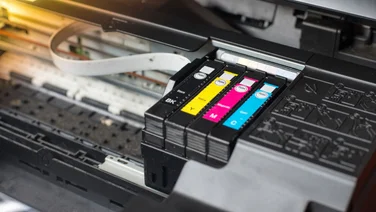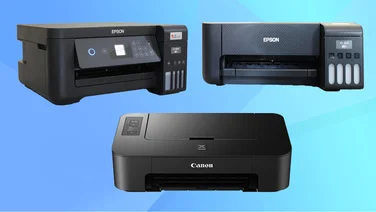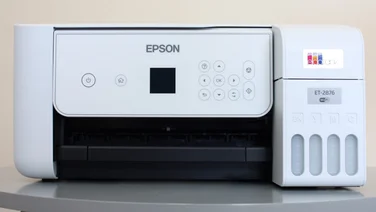To help us provide you with free impartial advice, we may earn a commission if you buy through links on our site. Learn more






The Sony HDR-TD20VE is a 3D camcorder with two 1/3.91in CMOS sensors, two Bionz image processors, a 10x optical zoom and a massive 64GB of built-in flash storage. You change between 3D and 2D camcorder modes using a switch on the back of the HDR-TD20VE, but don’t worry if you inadvertently record videos in 3D. You can still view your 3D videos in 2D should you not have access to a 3D TV.

We think HDR-TD20VE looks a bit like a monkfish, being a bit squat and wide. It’s a bit heavy, but it has a strong wrist strap and feels well balanced once it’s in your hand and you’re shooting. Even so, those with small hands may find it uncomfortable to use. We have medium-sized hands and found that all the main controls, such as the zoom lever and record button, were just within easy reach of our digits.
The HDR-TD20 has an incredibly high-quality touchscreen. It displays 1,229,000 pixels and can display 2D and 3D images. Conveniently, you can switch between the two modes using a switch to the left of the battery. The 3D effect is a bit like the Nintendo 3DS’s, and for the most part it looks fantastic, although you sometimes do get crosstalk which is an effect where you see two separate overlapping 2D images instead of one 3D image.

Mostly, the HDR-TD20’s monitor produces crosstalk when you use the zoom in 3D mode. The HDR-TD20VE has a 10x optical zoom, a 17x extended zoom for 2D, a 12x extended zoom for 3D and a 12x digital zoom. Although we did experience crosstalk when zooming, you should be okay as long as you keep the zoom within the first half of its full extension. We had no problems using the zoom in 2D mode, and although the HDR-TD20 doesn’t have the large optical zoom ranges of other camcorders, we found the 10x optical zoom perfectly adequate. It’ll be fine for most users.
The HDR-TD20 works well in dark environments, especially if you activate the built-in lamp. There’s a little noise, but that’s to be expected. The colours are fairly well reproduced, but footage looked a little over-exposed to us. It also works as well indoors as it does outdoors and we were happy with its image stabilisation. Our main criticism is that it took too long to refocus when we moved to a different room or panned quickly.

Of more importance is its 3D quality. We found the HDR-TD20VE’s 3D footage to be natural rather than gimmicky and overstated. Closer objects had a greater 3D effect and, unlike the HDR-TD20’s touchscreen, we only saw crosstalk when objects were incredibly close to the lenses. Colours and detail were just as good in 3D as 2D. As good as the HDR-TD20VE is, we were much more impressed by the 2D HDR-CX730E. We found it had better captured sharper, more detailed footage.
The TD20VE is also well equipped with connectors, having an active accessory shoe that’s hidden within a pop-up cover, a mini USB port, a mini HDMI port, an A/V multi-out port and separate microphone and headphone ports.
Once you’ve captured your footage, you’ll want to export it to your TV or PC, and the HDR-TD20VE provides many options to do this. One obvious method is to connect the HDR-TD20VE to your TV using the mini HDMI port, but you can also copy videos from the built-in flash storage to an SDHC or Memory Stick Duo card so you can use it on any computer with a card reader.

This is extremely handy should you choose to use the internal storage, because we had problems copying to and viewing videos on our test PCs when we attached the HDR-TD20VE via USB cable. Our PCs recognised the camera and loaded its built-in utility, but when we tried to copy or view videos we were told that they were in use and it couldn’t let us do either. The ability to interact with your HDR-TD20VE via a USB connection is an important part of the unit, and the problems we encountered coloured our view of the camcorder for the worst. Annoyingly, it also took around 28 minutes to copy 1 hour and 35 minutes of video from the internal storage to an SD card, which is longer than we were expecting.

Thankfully, we had better luck when we used the connected HDR-TD20VE as a Mass Storage device rather than the default MTP. We could then view and copy videos easily.
To make connection to your PC easier, the HDR-TD20VE has a built-in USB cable that tucks in to the wrist strap. This is handy should you not have a cable to hand, but it’s incredibly short. The HDR-TD20VE comes with a USB extender, but the problem here is that you’ll need to keep it with you at all times.
The HDR-TD20VE is perfect if you’re an enthusiast who wants to dabble in 3D film-making. If you’re strictly 2D, we think the Sony HDR-CX730E is a better option, but there’s no doubting the HDR-TD20VE is well-equipped, high quality and above all fun camcorder.






